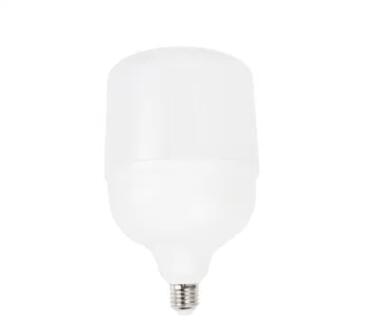What factors should consumers consider when choosing an LED bulb light
2023-10-25
When choosing an LED bulb light, consumers should consider several factors to ensure they meet their specific lighting needs. Here are some key factors to keep in mind:
1. Brightness (Lumens): Determine how bright you want the light to be. Look at the bulb's lumen rating, which measures the amount of light produced. Higher lumens indicate brighter light.
2. Color Temperature (Kelvin): LED bulbs come in various color temperatures, which affect the appearance of the light. Consider whether you want warm, soft white light (lower Kelvin values) or cool, daylight white light (higher Kelvin values).
3. Color Rendering Index (CRI): CRI measures how accurately the light reveals the true colors of objects. For tasks that require color accuracy, choose bulbs with a high CRI (90+ is excellent).
4. Wattage Equivalency: LED bulbs come in different wattage equivalencies (e.g., 60W equivalent). This helps you choose an LED bulb with a similar brightness to traditional incandescent bulbs while consuming less energy.
5. Dimmability: Check if the LED bulb is dimmable if you need the option to adjust the light's intensity. Not all LED bulbs are dimmable, and some may require specific dimmer switches.
6. Base Type: Ensure the LED bulb has a compatible base (e.g., E26, E27, GU10) that fits your fixtures and lamps.
7. Shape and Size: LED bulbs come in various shapes (e.g., A-shape, BR30, PAR38). Choose a shape that fits your fixtures and doesn't obstruct any shades or covers.
8. Beam Angle: Consider the beam angle, which determines how focused or dispersed the light is. A narrower beam angle is useful for spotlighting, while a wider angle is better for general lighting.
9. Energy Efficiency: Look for the ENERGY STAR label or an Energy Efficiency Rating to identify energy-efficient LED bulbs that can save on electricity costs.
10. Life Span: LED bulbs have long lifespans, but it's still good to check the estimated hours of operation. Longer life means fewer bulb replacements.
11. Color Options: If you want color-changing or smart LED bulbs, check for options that allow you to change the light color and control the bulbs remotely.
12. Brand and Quality: Opt for reputable brands and read reviews to ensure the quality, reliability, and longevity of the LED bulb.
13. Light Distribution: Consider the direction of light distribution. Some LED bulbs emit light in all directions (omnidirectional), while others are more directional. Choose the appropriate type for your fixture.
14. Environmental Impact: LED bulbs are generally eco-friendly, but if you're concerned about sustainability, look for bulbs with recyclable materials or reduced environmental impact.
15. Price: LED bulb prices can vary significantly. Consider your budget and choose bulbs that offer a balance between quality and cost-effectiveness.
By considering these factors, you can select the right LED bulb lights to meet your specific lighting requirements, whether it's for general illumination, task lighting, or decorative purposes.



